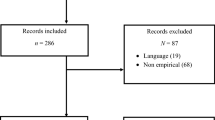Abstract
Brazil is a recently industrialised country with marked contrasts in social and economic development. The availability of public/private services in its different regions also varies. Health indicators follow these trends. Occupational health is a vast new field, as in other developing countries. Occupational medicine is a required subject in graduation courses for physicians. Specialisation courses for university graduated professionals have more than 700 hours of lectures and train occupational health physicians, safety engineers and nursing staff. At the technical level, there are courses with up to 1300 hours for the training of safety inspectors. Until 1986 about 19 000 occupational health physicians, 18 000 safety engineers and 51 000 safety inspectors had been officially registered. Although in its infancy, postgraduation has attracted professionals at university level, through residence programmes as well as masters and doctors degrees, whereby at least a hundred good-quality research studies have been produced so far. Occupational health activities are controlled by law. Undertakings with higher risks and larger number of employees are required to hire specialised technical staff. In 1995 the Ministry of Labour demanded programmes of medical control of occupational health (PCMSO) for every worker as well as a programme of prevention of environmental hazards (PPRA). This was considered as a positive measure for the improvement of working conditions and health at work. Physicians specialising in occupational medicine are the professionals more often hired by the enterprises. Reference centres (CRSTs) for workers' health are connected to the State or City Health Secretariat primary health care units. They exist in more populated areas and are accepted by workers as the best way to accomplish the diagnosis of occupational diseases. There is important participation by the trade unions in the management of these reference centres. For 30 years now employers organisations have also kept specialised services for safety and occupational health. Although they are better equipped they are less well used by the workers than the CRSTs. At the federal level, activities concerned with occupational health are connected to three ministries: Labour, Health and Social Security. The Ministry of Labour enacts legislation on hygiene, safety and occupational medicine, performs inspections through its regional units and runs a number of research projects. The Ministry of Health provides medical care for workers injured or affected by occupational diseases and also has surveillance programmes for certain occupational diseases. The Ministry of Social Security provides rehabilitation and compensation for registered workers. In spite of a decrease in the number of accidents at work during the past 25 years, working conditions have not improved. Changes in the laws of social security in the 1970s discouraged registration and reporting of occupational injuries and diseases. In consequence death rates due to accidents increased. With the implementation of the CRSTs, the recorded incidence of occupational diseases has risen, not only because of improved diagnosis, but also because of stronger pressure from the unions and better organisation of public services and enterprises.
Similar content being viewed by others
Author information
Authors and Affiliations
Additional information
Received: 24 February 1997 / Accepted: 14 March 1997
Rights and permissions
About this article
Cite this article
Bedrikow, B., Algranti, E., Buschinelli, J. et al. Occupational health in Brazil. Int Arch Occup Environ Health 70, 215–221 (1997). https://doi.org/10.1007/s004200050210
Issue Date:
DOI: https://doi.org/10.1007/s004200050210




